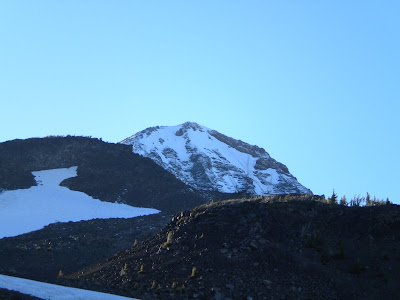
Some climbers say making too many plans and goals can be problematic; it is easy to spend too much time dreaming, and not enough time on the mountain. I know I am guilty of climbing more in fantasy than actuality. I know I spend quite a bit of time in my books, reading beta, studying photographs and film, planning trips, and figuring out gear requirements. I sip on my coffee, and I dream of the Karakorum range, or a more likely climb up Mt. Stuart's North Ridge Route. I sit here in a sedentary slump, with an ache in my body for lack of exercise. The winter presents plenty of opportunities to train for the following alpine season, however I find myself inactive.
How do I fuel the fire, how do I continue to push my boundaries? How does one learn more climbing when there are so few willing to impart their hard earned wisdom? The greatest climbers of all time have made mistakes, some of which are life altering or life ending; one never stops learning. I am at the most dramatic portion of an alpinist's progress- every climb being a lesson from start to finish, and every step being something of an adventure. Yet, perhaps when that isn't the case, there is no reason to climb?
Regardless, I think some couldn't be more wrong asserting the notion that plans are bad. Plans give me not only goals, but the notion that I should prepare. Perhaps this winter will be devoid of any real climbing, but instead constant painful slogs up hills. Perhaps aside from some formal snow and avalanche training, I will gain marginal amounts of knowledge for next spring, summer and fall. Maybe I NEED these goals to survive this winter. Skis and snow shoes will have to do; around here there isn't as much use for an ace axe as in many places. Ice climbing is severely limited, and the terrain is arguably flat compared to other portions of this range.
So I sip some more coffee, and I read about heroic multi-day ascents, of bivies on 4th class routes, of 48 hours climbing, and perhaps a few pleasant strolls along giant Cascade glaciers. As I get the jitters, I realize I must train hard through the winter. That seems significantly more difficult than the climbing season that will follow it. An apathetic lazy climber can't achieve much of anything to be proud of, yet with all this motivation, it is hard to not be a couch potato throughout the dark, cold winter.
So what is the point of all this? Perhaps it is to commit to a formal list of goals, so that I am reminded of what I must prepare for. For the climbing season of 2011, I have some ambitious climbs in mind. Yes, it's a bit early for New Year resolutions. No matter...
Mount Jefferson:
Second highest peak in Oregon coming in at 10497ft, and the most technical of the larger peaks thanks to the steep snow field traverse and a class 4/5 summit block. 8-12 hours from base camp depending on route. Probably will attempt the Jefferson Park route.
Middle Sister:
This one proved elusive this last summer. It's mostly a slog, and should fit in mid to late summer as a good overnight climb. No biggie.
Broken Top:
Another elusive climb- as soon as things melt from the Broken Top TH, I'm doing this. Single day speed ascent style. Maybe I can run part of it?
Mount McLaughlin:
Early season trip- should be fine in some snow.
Mt. Hood:
Because I need to at least do it once.
Mt. Shuksan:
It's a beautiful mountain, with a myriad of routes that look interesting. It's a bit far north, so the drive will prove to be the most obnoxious part of the approach.
Mt. Stuart:
North Ridge route. This climb is my number one goal, and likely to be a good late season finale to my year. It is not only a test of endourance ( Grade III to IV, 5.4 to 5.9 depending on the variation), but is also a test of technical ability. The descent is also one of the more difficult parts of this climb. I am unsure of the logistics yet, but if there is one climb I want more for next season, I cannot think of it. It is also one of the 50 Classic Climbs of North America, and one of the few that deserve it (so I am told).
Sacajawea:
Second most prominent peak in Oregon at 6,388, with elevation of 9,838. It's most popular route is non technical, and the climbs tend to be on sub par rock. Its location and its views draw me more than anything.
Smith Rock -
Monkey Face:
It's a classic climb.
Wherever I May Roam:
Another great multi-pitch climb.
What does all this mean? Nobody will be impressed with this list. In fact, the bottom line is, if I can't complete this list, or at least whittle away at it, I shall feel abundant shame. This is my base line, and if I can't manage this, I should retire now.










































